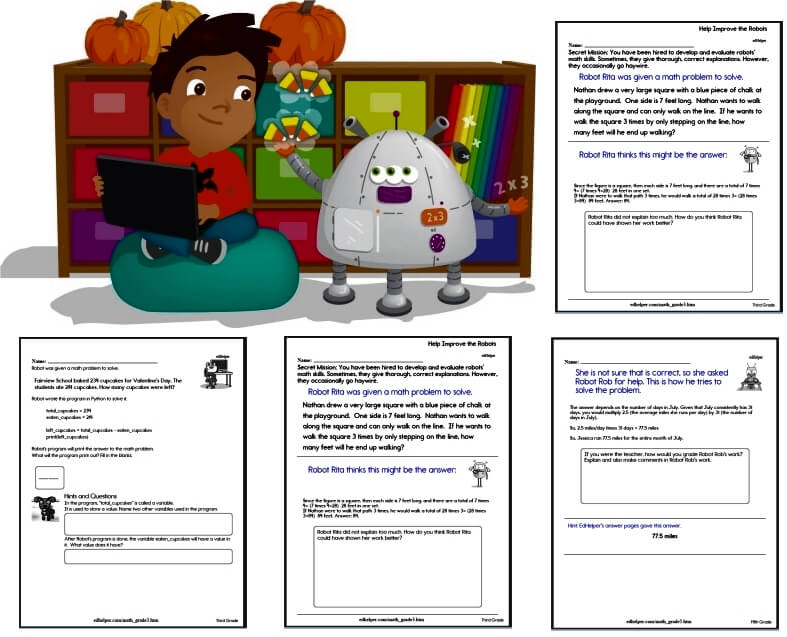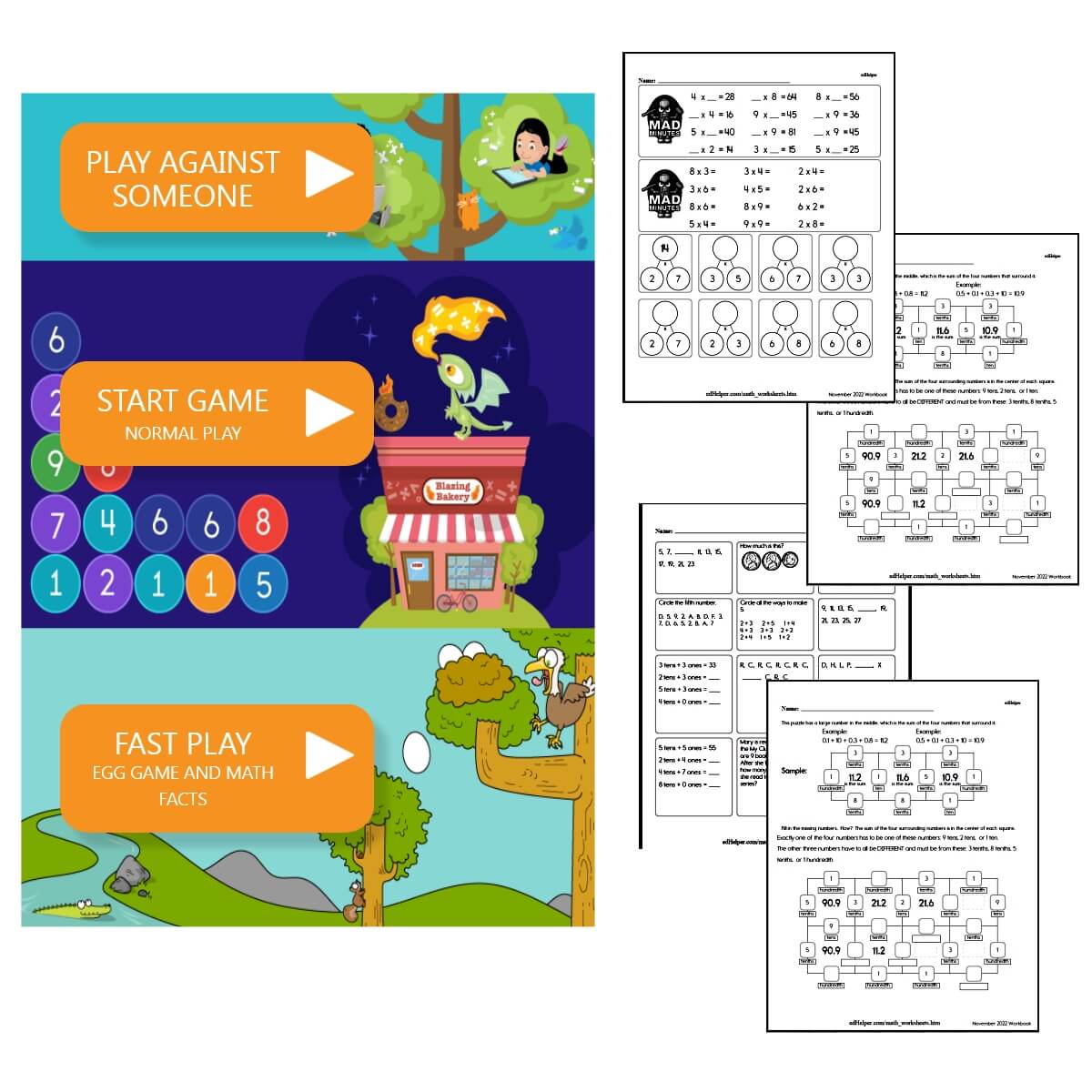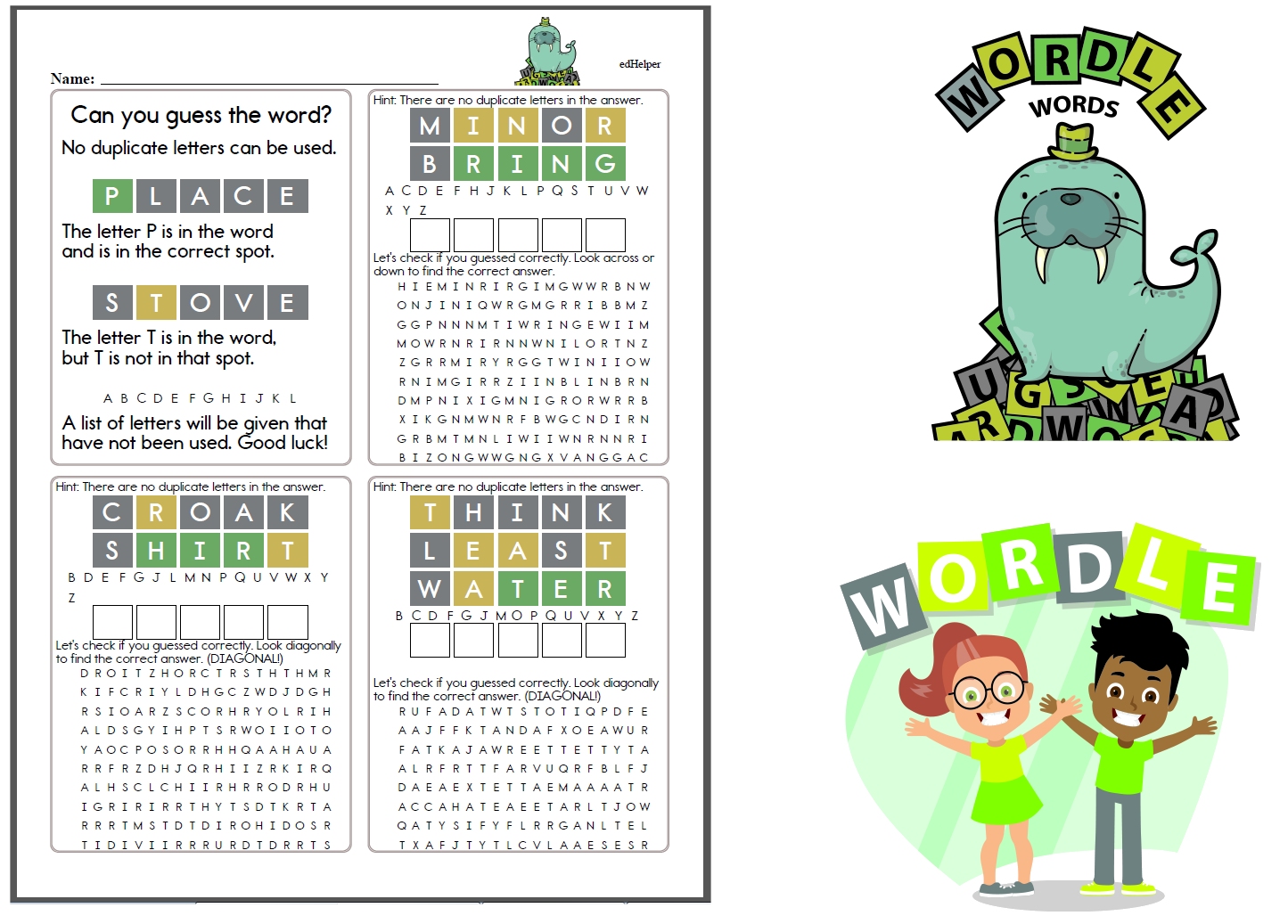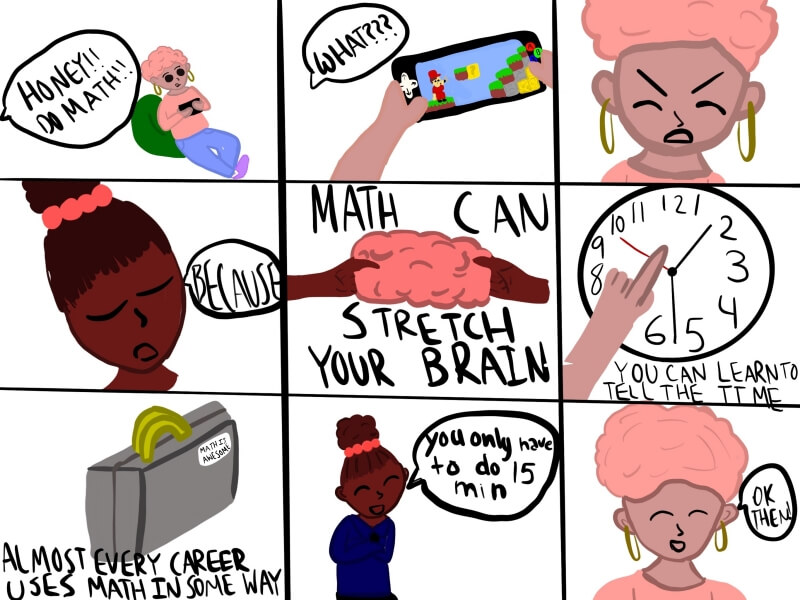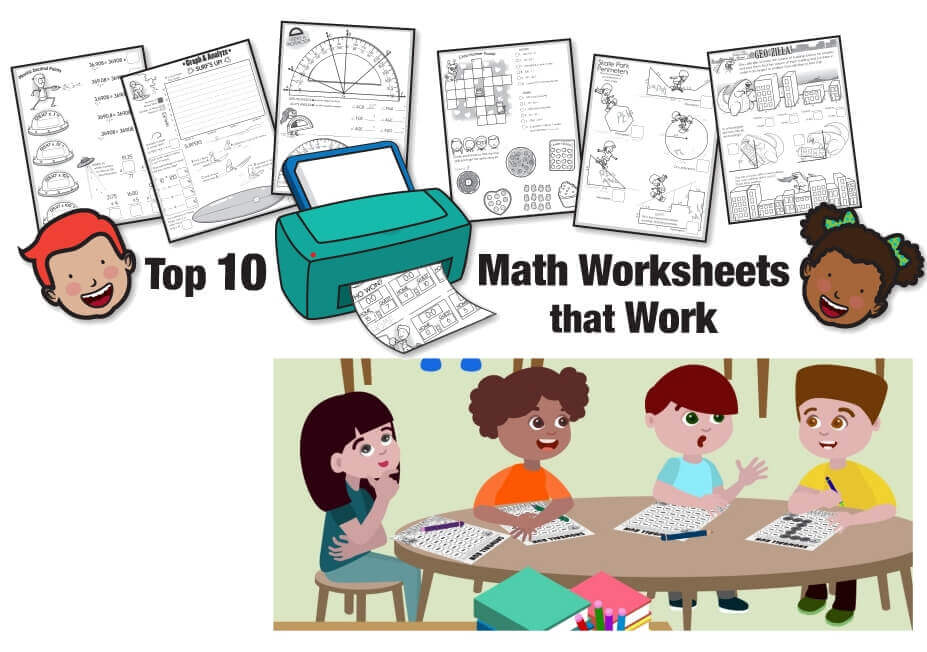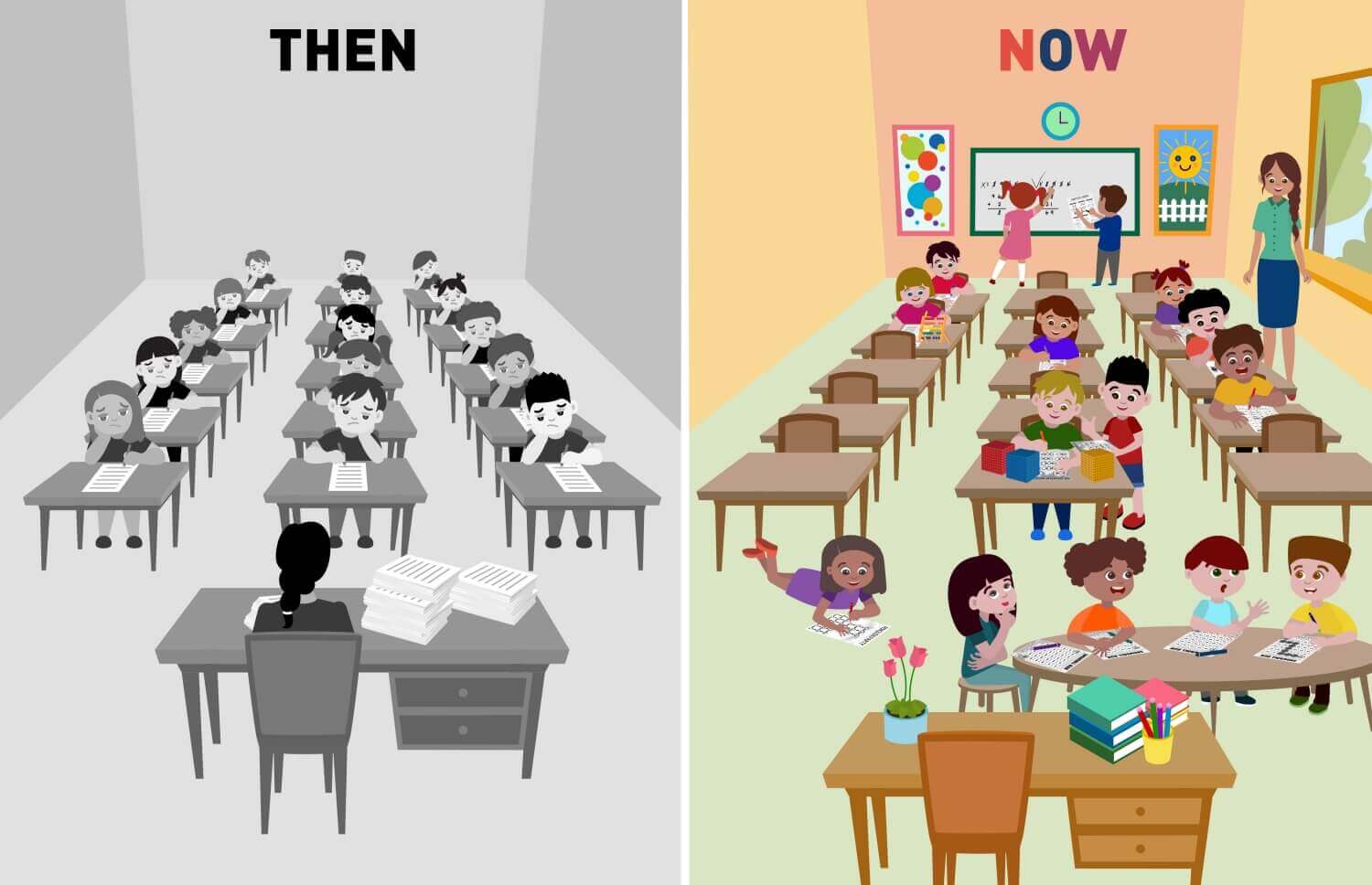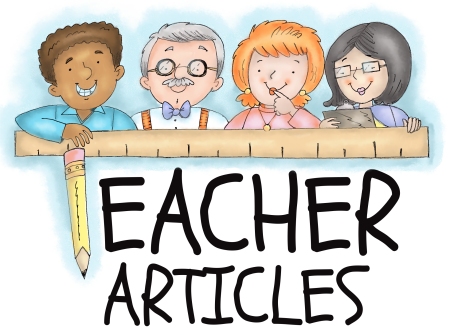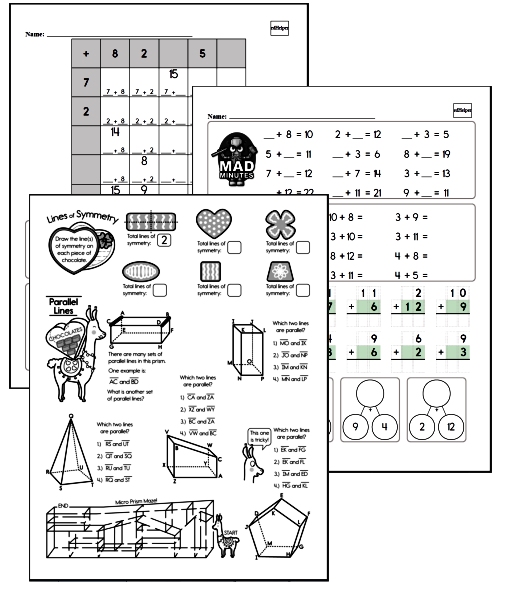10 Things to Consider When Engaging Students in a Writing Program [with Free Writing Worksheets]
By: edHelper Staff
Updated: Apr 21, 2020
![10 Things to Consider When Engaging Students in a Writing Program [with Free Writing Worksheets] 10 Things to Consider When Engaging Students in a Writing Program [with Free Writing Worksheets]](https://imgs.edhelper.com/best-teaching-and-classroom-ideas/10-Things-to-Consider-When-Engaging-Students-in-a-Writing-Program-with-Free-Writing-Worksheets.jpg)
"Writing gives voice to our inner thoughts and allows us to share them. As a form of communication, writing can transcend time and is a way to pass stories from generation to generation." - Dominican University of California
As we all know, writing is an essential skill that students need to acquire early on to boost their confidence while communicating and to develop their voice. Without further ado, here are ten things to consider when engaging students in a writing program!
Writing Workbooks to Print
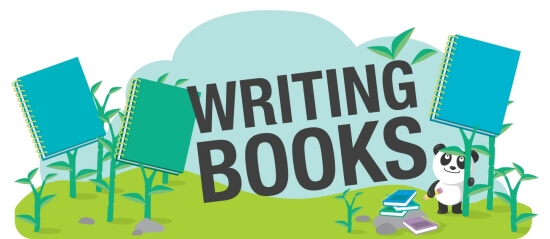
#1 - Remember that you may be one of the first English-speakers in the student's life.
Teachers are an important resource for students to learn how to write effectively, especially if English isn't the student's first language.
Writing programs are integral for every student of any race and background, and constructing a program that can capture the attention of every diverse student in your classroom is essential. In 2018, a little over 18 million children had at least one immigrant parent in the U.S., and in Canada, close to 2.2 million children had at least one foreign-born parent. Canada has also estimated that children with an immigrant background could represent up to 49% of the total population of children in 2036-that's nearly half of Canada's entire child population.
We can see that now, more than ever, writing programs are a crucial way for teachers to help students improve their English writing abilities. Every student will be at a different English-speaking level, and through writing programs, teachers can gauge the level of each student.
#2 - Writing programs will give you insight into the student's level of understanding
Through writing activities to get kids writing, you can get a real-time depiction of each student's comfort level and understanding of the problems they are given. You can use English workbooks as a tool to find students' strengths and weaknesses and allocate your energy where they need it most.
In younger grades, such as first grade, you can start off by asking questions that require the students to reflect and write out their thoughts, regardless of whether their answers make any literal sense. The key is to challenge students to put their intangible thoughts into words on paper, and while this may seem like a simple activity, they can build on this in later years to advance their level of communication.
For instance, this 1st grade writing workbook asks students to both write and draw their thoughts to answer open-ended questions, allowing them to use their imagination in order to continue a story that has already been given to them. Practicing this form of communication encourages students to compartmentalize their thoughts and be able to organize them in a manner that other people (i.e., you and their parents) can understand!
#3 - It's never too early to introduce advanced concepts
Students can practice building their understanding and use of literary devices and other advanced concepts early on as well! For instance, lessons on oxymorons could start off with finding antonyms of a long list of words. Assonance can be practiced by first understanding what vowels are.
Even tone can be introduced as early as the second grade by asking students to write down how they would explain their favorite dessert if their audience was their best friend versus a space alien that has never been to Earth.
Simply having students challenge their minds to think in a different perspective will tremendously advance their writing to higher levels in the years to come.
"It takes time to teach students how literature works, but when broken down into steps, it is not such a big mystery." - Christina Gil, high school English teacher for 16 years
#4 - Elementary writing programs improve long-term academic success
So how do we improve writing skills? According to The Graide Network, many studies have shown that students who are able to master writing skills early on struggle less in overall communication and literacy. For instance, students who learn to write a complete sentence in earlier grades will be better able to write complete paragraphs and essays as they age.
Writing is one of the biggest tools that students will take with them into the workforce, and as young adults venture out into the world as leaders, they will best benefit with strong writing skills.
Writing programs help students to pick ideas, organize their notes, and use their voice. Since every student is unique, writing programs that involve different writing strategies will offer a wider range of tools for students to pick from. In this way, the students will have many different writing skillsets to utilize in the many academic and work years that will come ahead.
The College Board data illustrates the importance of writing skills perfectly-about 50% of employers take writing into consideration when hiring professional staff, and 80% assess the employees' writing during the interview phase. Resumes and cover letters are two small examples.
#5 - Open-ended questions can offer a sense of freedom in writing choices for students
Teachers can provide opportunities for students to choose what they write-and how they write it. Writing programs are great outlets for such practices because they can provide prompts, and students can take it away using their own creativity. The prompts should state clear expectations and instructions while giving students room to express themselves.
#6 - Writing programs release responsibility from the teacher to the student.
Once students have a strong grasp on different writing strategies, teachers can highlight the purpose of each strategy and when to model its use. In this way, students can be guided to collaborate in small groups to practice applying the strategies. Students will have a chance to demonstrate their understanding of the strategies and be encouraged to apply them independently.
Gradually, students will feel confident enough to take over the writing programs and guide themselves through completing the packages. It's important to remember that teachers do not release responsibility to students too early, or too quickly.
Another way independence can be slowly attained by the students is by introducing peer revisions and collaborations, i.e., having students brainstorm ideas together about a topic, read each other's drafts, or edit/revise peer work. These group exercises offer a lot of room for teamwork and peer learning.
#7 - Writing programs foster a growth mindset.
Stanford University's Dr. Carol Dweck identified two different types of mindsets: a fixed mindset and a growth mindset. She found that in fixed mindsets, we see our mistakes as failures rather than opportunities for growth and learning. However, with a growth mindset, Dr. Dweck explains that we confront challenges as a way to overcome them, with effort and the right strategies.
Writing programs, especially when paired with reading exercises, require students to analyse and consume text. Since each student has different views and may perceive text differently, sharing ideas in the classroom will help to spread creativity around the room and create space for a growth mindset. Once students understand that one reading can have different meanings, and it's okay to see things differently, they will have more patience for themselves if they misread the text or misunderstood it. Sharing ideas also encourages asking for and receiving help from one another-another crucial part of enabling a growth mindset.
#8 - Writing programs are beneficial for a variety of purposes
According to the United States National Centre for Education, writing programs are not a mundane and small task for elementary students, nor should they be structured so. Writing well allows students to think carefully about the purpose of writing, plan what to say and how to say it, and understand what the reader needs to know.
This process is used to make an argument, provide a means for self-reflection, share an experience, enhance the understanding of reading, or even just provide entertainment!
#9 - Fostering a supportive environment in your classroom will increase motivation for writing.
In a supportive environment, teachers can participate as writers, not just as instructors, to show the importance of writing. This way, the message that writing is important, valued, and rewarding is portrayed.
The best approach to this is through collaborative activities between teachers and students. This exercise creates a sense of safety and community within the classroom, and students may feel more connected to one another and the teacher.
Teachers can take the next step by publishing students' work to help them feel valued in their writing community as well.
#10 - Last ... writing programs build confidence!
Writing can provide a therapeutic outlet to help students cope with stresses in their personal life. Journals, personal story writing, and daily entries can help children discover their identities and work through real-life problems.
Keep Building Writing Skills with Writing Prompts
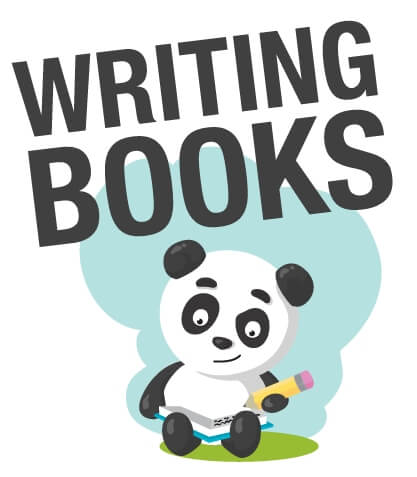

![10 Things to Consider When Engaging Students in a Writing Program [with Free Writing Worksheets] 10 Things to Consider When Engaging Students in a Writing Program [with Free Writing Worksheets]](https://imgs.edhelper.com/best-teaching-and-classroom-ideas/10-Things-to-Consider-When-Engaging-Students-in-a-Writing-Program-with-Free-Writing-Worksheets.jpg)


